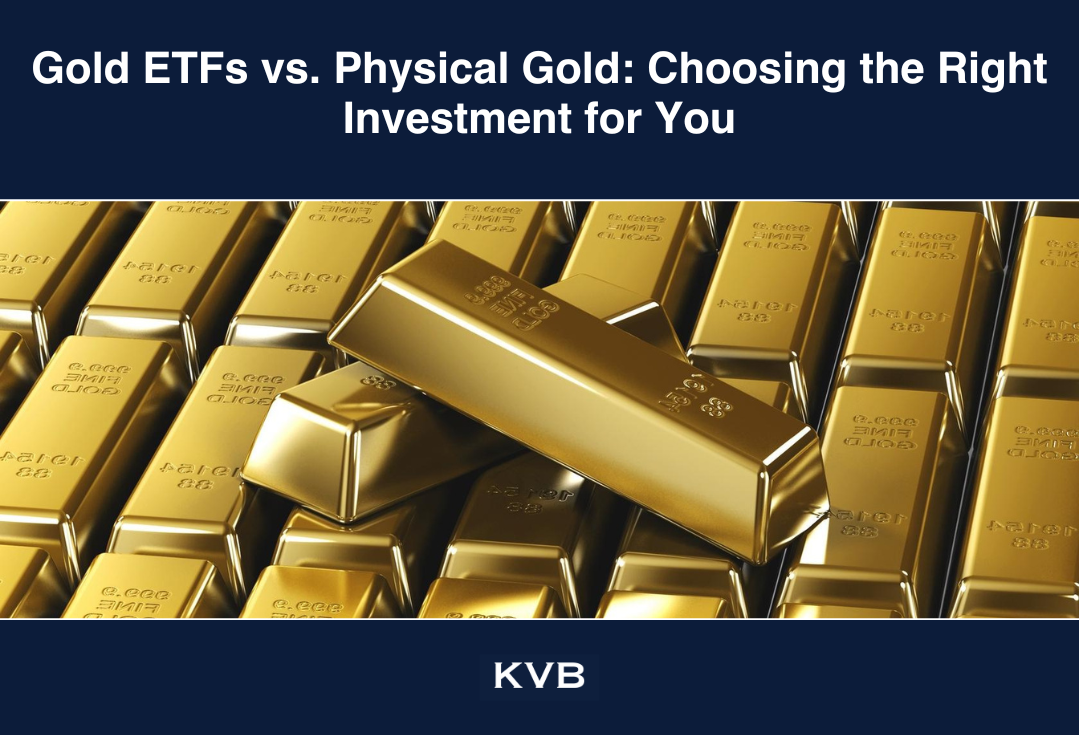


Gold has been a trusted asset for centuries, often seen as a safe haven during times of economic uncertainty and inflation. Today, investors commonly choose between two primary gold investment options:
Gold ETFs and Physical Gold . Each has unique advantages and drawbacks, depending on your financial goals and preferences. Let’s break down the key differences to help you decide which is the best fit for your portfolio.
What Are Gold ETFs?
Gold exchange-traded funds (ETFs) are investment products traded on stock exchanges, allowing you to buy shares that track the price of gold. These funds either hold physical gold or invest in assets tied to gold, such as futures or mining stocks.
Advantages of Gold ETFs
High Liquidity
Gold ETFs can be traded like stocks, offering quick entry and exit points. This liquidity makes them a convenient option for investors who prioritize flexibility.
Lower Costs
Unlike physical gold, ETFs eliminate expenses related to storage and insurance. You only pay a small annual management fee, which is usually much lower than the costs of securing tangible gold.
Portfolio Diversification
Investing in ETFs provides exposure to gold without the need to own it physically. Some ETFs even include additional assets like mining stocks, broadening diversification.
No Storage Issues
With gold securely stored by the ETF’s custodian, you avoid the logistical challenges and costs associated with storing physical gold.
Drawbacks of Gold ETFs
No Direct Ownership
While you gain exposure to gold prices, you don’t physically own the metal. This can be a downside for those who prioritize tangible assets for security or emotional reasons.
Market Risks and Fees
Gold ETFs are subject to broader market influences, which can affect their value. Additionally, management fees, though minimal, can slightly reduce returns over time.
What Is Physical Gold?
Physical gold includes tangible assets like gold bars, coins, or jewelry. Unlike ETFs, owning physical gold means holding the asset in its purest form, making it a popular choice for those who value direct ownership.
Advantages of Physical Gold
Tangible Ownership
Physical gold offers the reassurance of owning a real, touchable asset. This is particularly appealing for those seeking a hedge against financial crises.
No Counterparty Risk
Unlike ETFs, physical gold isn’t tied to third-party institutions, eliminating risks such as fund mismanagement or institutional failure.
Privacy
Transactions involving physical gold can often be conducted privately, allowing investors to maintain confidentiality.
Drawbacks of Physical Gold
Storage and Insurance Costs
Storing physical gold securely requires additional expenses, such as safe deposit boxes or professional storage services, along with insurance fees.
Lower Liquidity
Selling physical gold may take time, and the price received can vary depending on market conditions and buyer negotiations.
Premium Costs
Purchasing physical gold often comes with premiums above its spot price, covering minting, transportation, and dealer margins, which can reduce overall returns.
Which Option Should You Choose?
The decision between Gold ETFs and Physical Gold depends on your individual needs:
Choose Gold ETFs
If you prioritize convenience, liquidity, and lower costs. They are ideal for short-term investments or for those looking to diversify their portfolios.
Choose Physical Gold
If tangible ownership and security are more important to you, especially for long-term wealth preservation.
To achieve balance, you might opt for a combination of both. This strategy allows you to enjoy the benefits of flexibility through ETFs while maintaining the security of owning physical gold.
Disclaimer
Derivative investments involve significant risks that may result in the loss of your invested capital. You are advised to carefully read and study the legality of the company, products, and trading rules before deciding to invest your money. Be responsible and accountable in your trading.
RISK WARNING IN TRADING
Transactions via margin involve leverage mechanisms, have high risks, and may not be suitable for all investors. THERE IS NO GUARANTEE OF PROFIT on your investment, so be cautious of those who promise profits in trading. It's recommended not to use funds if you're not ready to incur losses. Before deciding to trade, make sure you understand the risks involved and also consider your experience.